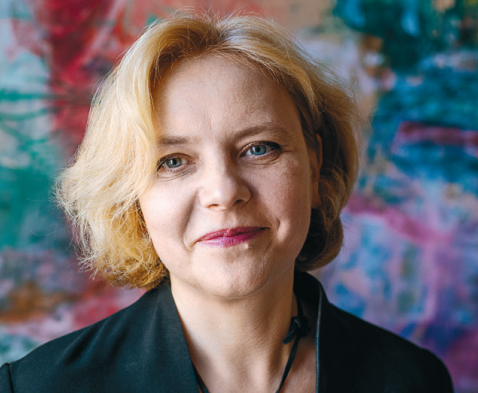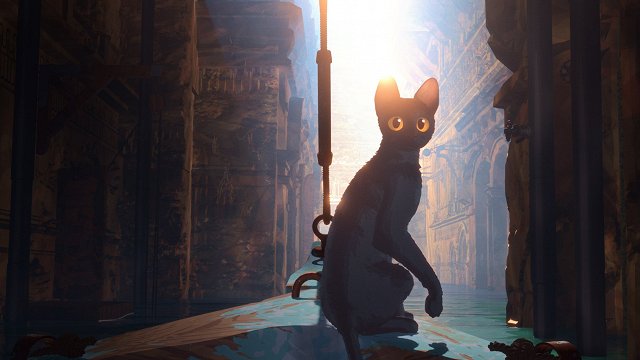As a child, Viduleja starred in the short film My Little Friend Socrates. She has studied at the European Film College and the National Film and Television School in the UK. Viduleja founded the Film Angels Studio, was one of the directors of the feature film Vogelfrei and has recently finished work on Homo Novus, a film based on Anšlavs Eglītis’ eponymous novel. The film is set in 1938 and sees the poor artist Juris Upenājs arrive in Rīga, meeting different personalities of the art world under the patronage of curator and critic Kurcums, and experiencing success, failure, contempt and love. We met Anna to talk about comedy and romance in cinema.
How much of Anšlavs Eglītis’ ironic text has made it into the film?
At other times I would have been very careful with using words. In Vogelfrei, some four words were uttered within the 30 minutes I directed. But in this film, Anšlavs Eglītis is valuable in and of himself. The language is wonderful, like a melody, starting from such little words as “Is it within your ken?” [Latvian: Vai jūs nenoģiežat..?] and so on.
It’s a thing of the past, but it’s such beautiful Latvian. And then there are the characters living with language as an instrument. It’s very important to them to be able to express themselves ironically, and Kurcums is the protagonist to whom we allotted the most of Anšlavs Eglītis’ language. Speaking of jokes, I think there are but a few situations in film that are funny without words. Language is inevitably present.
As you made the film, did you ask to repeat any scenes, saying: “No, this wasn’t funny enough”?
No, I did not do that. I am convinced that if you try to force funniness you’re asking for trouble.
But the actors do have a conception of the ways of playing it in a funnier or less funny way? Of the moments that ask for a pause so that the audience laughs. In principle, a director could issue an order, asking it to be funnier, asking for a bit more.
I sometimes reminded the actors that we’re shooting a comedy. Imants Strads was especially resourceful in this regard. I told him, “Imants, think about how you could help. We’re making a comedy here.” And he said, “Oh, in that case I can offer you a high-pitched laugh – hahahah.”
Even though it was a small episodic scene, in which he was a visitor at an exhibition and the back of his head was visible as it ended, he knew this and turned his head and scratched his ear. It’s a tiny thing, a milligram as it were, but it pulls one of the corners of your lip up into a smile.
As concerns pausing, it’s like maths. A pause is a very strong element of the comedic equation. I have given it some thought – of how to create a funny situation and how to arrange the three steps in sequence: one, two, three, and the audience laughs. For the viewer to laugh, it must be a very precise and pure method.
The theory of laughter lays a serious stress on being precise. Different scenes allow approaching precision from different angles, but it’s always a specific point which provokes a counter reaction on the part of the viewer.
I recently found a book an American comedian wrote, analysing and teaching comedy. He said that comedy is a quest for truth. Drama and tragedy are genres that seek superhuman characters, but in comedy characters are revealed such as you and I are in everyday life. They are fighting to meet some goals, often not having the instruments required for it. And right away this makes the process very amusing, sometimes funny and sometimes tragicomic. It seems very interesting and significant to me to use comedy as a genre for learning a truth of sorts.
Does the film you started directing is different from the film you’ve finished?
You start with the text – Anšlavs Eglītis’ text. And then you involve your colleagues. I had really wonderful associates – the costume designer Liene Rolšteina, cameraman Jānis Eglītis, and the artist Kirils Suvalovs, – with whom we visualised the film. Liene did design sketches and Kirils did art sketches, or material evidence. A visualisation was created inside the heads of four people. All four of us went into the world of imagination, and it was a very beautiful process. Then it so happened that the pace of production dramatically accelerated our peaceful visuality. It was an unexpected change for me.
The film that was initially in our heads was very different from the film we saw in the early stages of production. Only then I understood that the story and the many characters were very demanding, and that a lot of our attention and of the film itself was taken up by the story. What we had to marry in the film was, on the one hand, Anšlavs Eglītis’ nimble and tight story with many characters and, on the other hand, the nature of the protagonist, a young person. The nature of an artist is slower. We really wanted to visualise talent. We wanted to see what talent means… when it happens. An artist is a carrier and realiser of talent.
The artist Džemma Skulme allowed us to meet her. It was mostly because Kristīne Krūze, starring as Ciemalda, wanted to talk with Džemma, because the artist’s mother, Marta Skulme, was sort of a prototype for the character, or at least we think so. At Skulme’s workshop the art historian Ingrīda Burāne, who has been of great personal and professional help during the making of the film, went to a picture and said, “It’s so beautiful!” or something to that effect. And Džemma Skulme replied: “Yes, when I finally got it right, my jaw was shaking with happiness.”
It was something that I really wanted to show in our film: the moment when the artist experiences something greater than himself. Something that makes his jaw shake.
When he experiences something outside the usual everyday consciousness. See, the quick-paced, dynamic situation we were in as we filmed it, was quite brutal. And there were many obstacles to a visual portrayal of talent.
Does the film feature a character called the Latvia of the 1930s?
I had an important goal with which I started this process, namely to maintain a respectful attitude against the text and the way things were back then as I knew them. But it seemed acceptable and commendable to me to give in to the way that this process led to unrealistic combinations.
For example, we had a place to shoot Bicēns’ workshop, and we had done preparatory work, and they withdrew at the last moment. We went to look at a different filming place, the former Literature Museum at the unrestored part of the presidential palace. As we went into a room on the second floor, I and Jānis Eglītis understood at once that this must be Bicēns’ workshop! But in the 1930s the same room had housed the State Art Museum, and the walls were covered with paintings of the artists we considered candidates for the prototypes of Anšlavs Eglītis’ characters. But I didn’t doubt that in this case we don’t need to be as historically accurate. Does it make the reality of the film a fantastical reality? Most likely not. But this degree of freedom was very important to me.
At first you wanted to make it a series.
I did for a while, yes. It seemed completely warranted, as Homo Novus is a novel that was published in a newspaper in 33 instalments, with a beginning, middle and an end to each part. But I am grateful for the way life sometimes turns out. One of my friends told me – here you were with your expensive project of a costume drama, and here they make a centenary contest, like if it were made just for you!
Will the film be romantic? Will the audience have to cry?
I think I am quite romantic by nature. Therefore, it’s most likely the film will have a lot of romantic stuff, but the makers of the film had no intention of making the audience cry. You’re allowed to do as you please, however, as any emotional empathy is rewarding to us.
Did it seem too personal for you to reveal your romantic side?
No, I have no fear of opening myself up. I have many other fears, both in life and on film. The most pronounced of my fears is that what we’re making could be boring, unclear, or senseless or unnecessary to the audience. And romance can be dangerous within the territory of senselessness and boringness. Therefore I tried limiting it on my end. But if someone, especially a man, offered doing something romantic or heartfelt, I accepted it with open arms. Then it seemed safer to me – if a man offers it, we’re on safe turf.
Do you think using romantic feelings for manipulative ends is worse than using humour?
I think that good humour is not manipulative. I like cerebral jokes. I like subtexts and small things that the viewers notice. But all the speculations happen with the use of sentiment, of drawing out cheap emotions. It’s not interesting to me. It’s not an interesting experience to the viewer as well. And it’s quite senseless too.
What did working on this film do to you? Have you changed?
It’s very important to me for the film being as an archaeological excavation of sorts. I have adopted this from Krzysztof Kieślowski’s cameraman. In one teaching session he said he thinks making films is an archaeological excavation.
It is important to start the shooting process with the episode that’s most important in terms of content, as by then you have found the crossing point and reached a better understanding of where you should dig further – to the right, to the left, up, or down. A wonderful conviction arises that a film already exists in another dimension and then you simply have to uncover it. And the shape in which the film reveals itself to you, all these pleasant surprises – it’s a wonderful process.


























